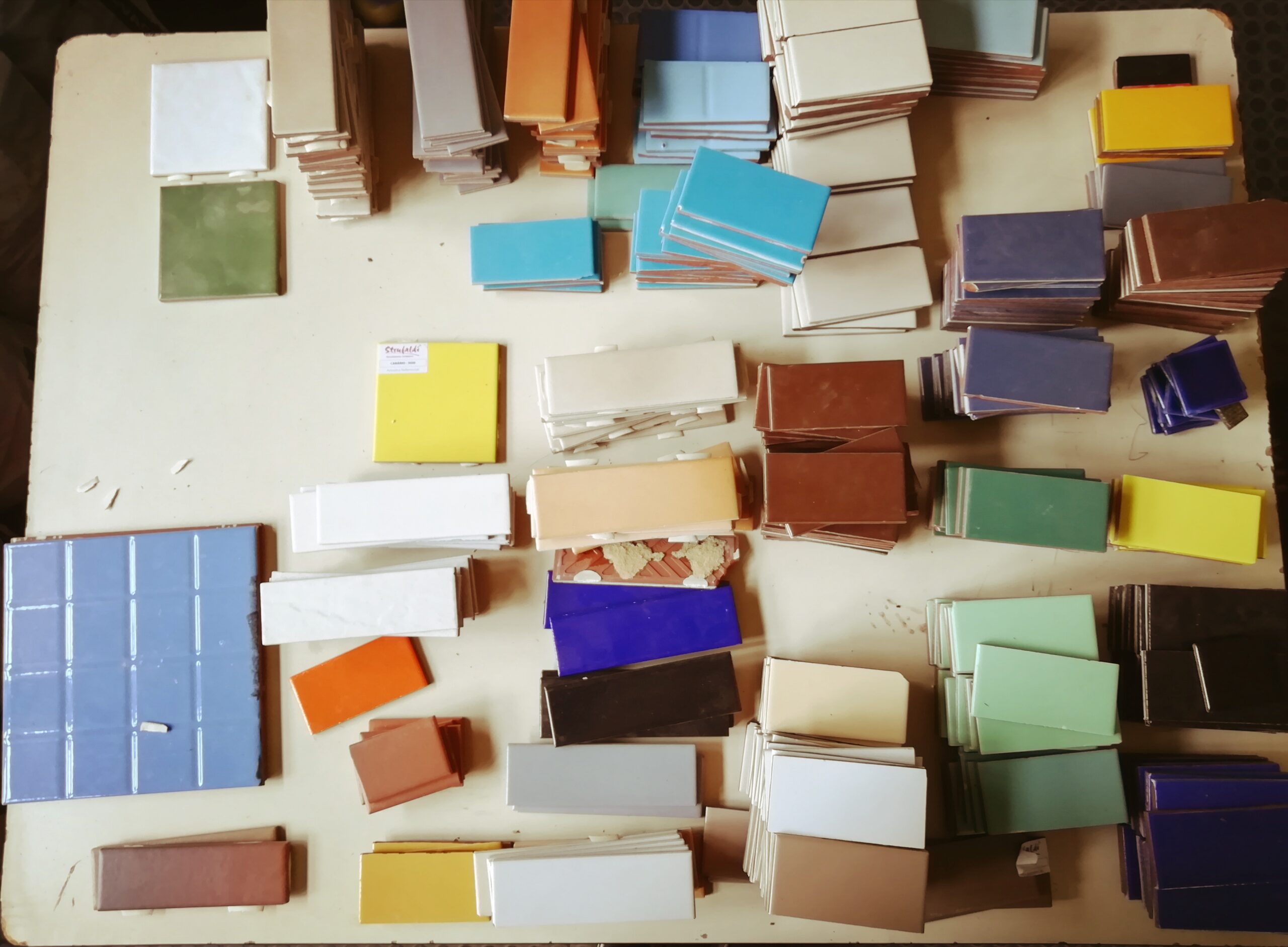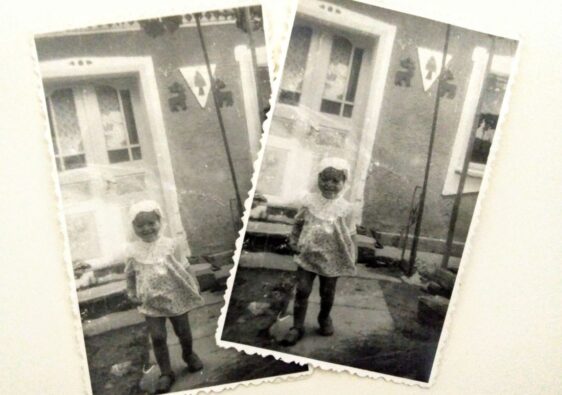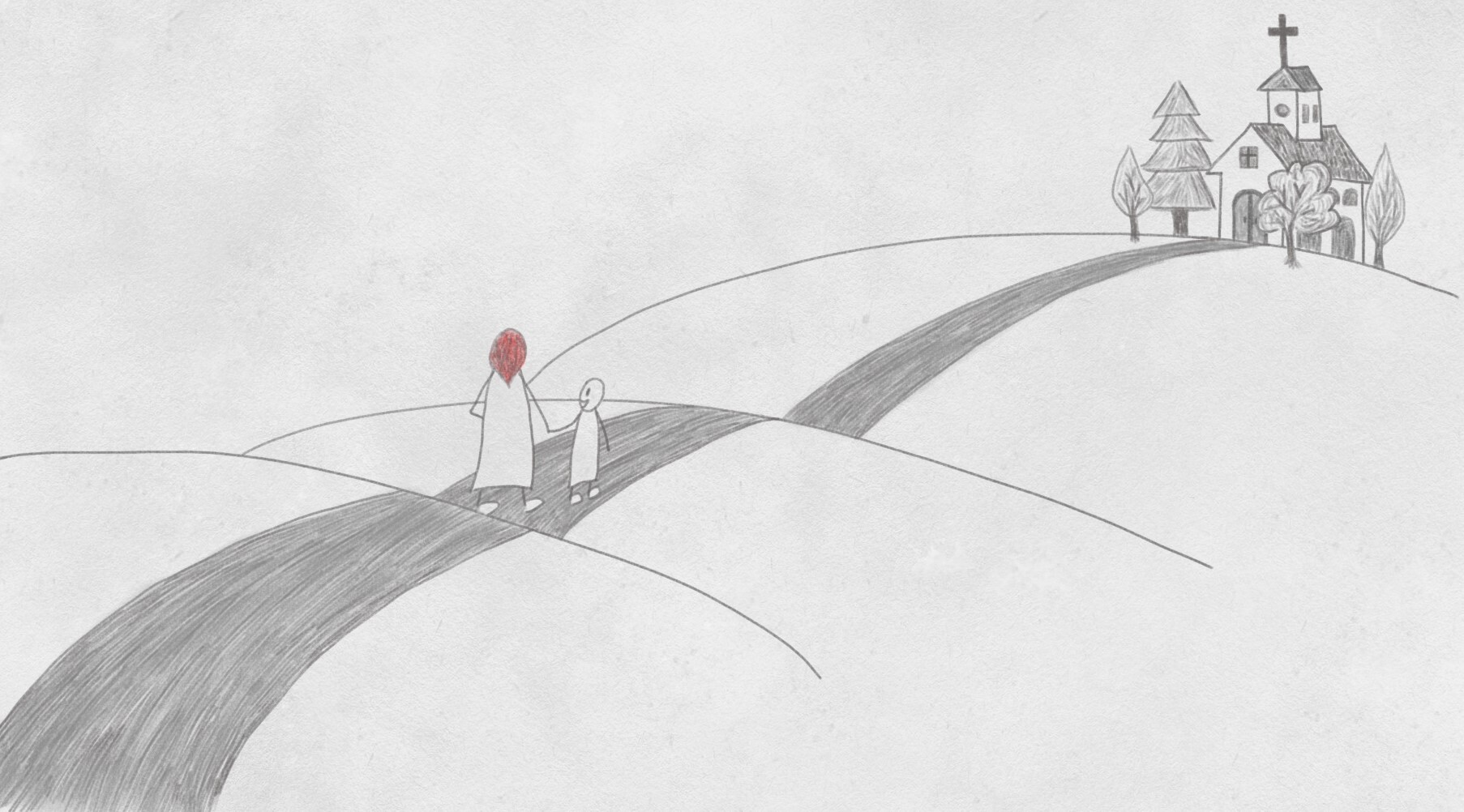Last year, around this time, something super cool happened: I got into a learning context where I was invited to imagine the most exciting kinds of schools – and then go find them in the real world. I had just joined the Alternative University in Bucharest, eager to explore the very broad subject of education. One of the classes I chose was Schools around the World, facilitated by Ana Marica and Traian Brumă, two unsettled souls passionate about learning and education. In just five easy-peasy steps, here’s what Schools* around the World 1.0. was all about:
*the term school stands for any kind of project, institution or community focused on learning
Step 1: Find waaay too many awesome schools around the world – go crazy with the numbers!
Step 2: Tough luck, you gotta narrow down your list to just seven. This step comes with an assignment: write an article about the seven schools on your list.
Step 3: Now it gets even narrower: choose one of these seven schools. This should be a school where you’d send your seven year old self, or where you’d go even now to learn cool-stuff-you-couldn’t-explore-before-because-you-had-to-learn-boring-stuff-for-exams.
Step 4: Break your Piggy Bank (hope you got that pig fat enough, and if you didn’t, ask yo’ mates for some dough) and go visit the school that left the strongest impression on you. Interact with the surroundings, with the students and teachers and staff, find out their stories, ask too many questions.
Step 5: Build a school. Steal the best ideas from your research and your visit, investigate the specific context of your community, build a school that fits the people around you.
What you’re about to read here is my journey from steps 1 to 3. Step 4 is a whole adventure in itself and deserves the proper attention – so stay tuned for that. Step 5, well, this is a long term commitment; I need to figure out if it’s gonna end up in marriage or separation. Just gimme a few years.
***
The first three steps seemed all nice and easy until I actually opened Google to start the research. I dare you to try this. Like… where do you even start? Should I google “cool schools around the world”, or “awesome schools in Europe”, or “best schools in the world”? Sure, that works: all kinds of lists pop up. But they are curated by other people, based on their values, and based on their vision of what meaningful education is. So thanks, but no thanks. I want my own list.
To move past this hindrance, I decided to take a look back on my learning experiences, both in and out of the formal institutions: what worked? what didn’t? Other questions followed. How would I have liked to learn when I was 7? And when I was 16? How about present-day-me, how do I learn now?
That’s when it hit me: no one, not ever (not even myself) had ever asked HOW I learn. It has always been about the WHAT of it. After one year of experimenting with my learning at the Alternative University, this concept, of “how we learn”, became a commonplace thing, but at that moment it was like an epiphany that hit me surprisingly hard. And it was only the first one to come out of the experience with Schools around the World and the Alt. Uni. (…why do you think it took me like a whole year to write this “assignment”?).
Dramatic moment aside, here are a few things that came up while reflecting on the learning processes from my almost three decades of life.
What worked:
- Stories – novels, movies, podcasts, videos, comics, mixed media – any form of storytelling works for me; I could learn quantum mechanics if it comes as a story! And even more difficult than quantum mechanics: knowing myself. For me, that also works best through stories. I think it’s important to mention here that storytelling is something I explored on my own, outside of school, and I’m convinced that this was possible mainly because I was lucky to be growing up in a house with hundreds of books.
- Copying examples, imitating others – when I need to understand a task, either theoretical or practical, that requires logic and focus, the first step for me is to see and imitate how others do it.
- Handwriting – even today, this is the secret to keeping myself focused on the topic; otherwise my mind wanders over the hills and far away, tanana na na.
- Learning by doing, learning by teaching others – I don’t know about you, but for me, these methods of learning, in their most efficient forms, happened only outside the formal education system.
- Travelling – so far, my most powerful learning experiences happened through travelling, through immersing myself in unknown environments. For me, travelling came pre-packed with unlearning, with questioning almost everything I believed about myself and the world. Obviously, this also happened outside of school.
What I really-really wish I had in my educational experiences:
FREEDOM!!!
Pl4y!
JOy!
FUn!!
Fr33AgenCy!
Contrary to more conservative opinions, granting children their right to independent exploration does not mean giving them a free ticket to wreak havoc and eat sweets all day. Like native american tribal wisdom says, free will is cultivated by responsibility so that the child can say “I have the power to make my own decisions” (from the Circle of Courage, as explained in the book Reclaiming Youth at Risk, by Larry Brendtro and Martin Brokenleg). By associating learning with fun, joy, playing and freedom, children build resilience and autonomy, and develop the mindset required for lifelong learning.
A few years ago, after getting my bachelor degree, I decided I’m a free person and I can do whatever I want with my time on Earth. But you see, freedom is a difficult thing to deal with. You need resilience and autonomy; you also need to know yourself, to understand your needs and to know how to listen to the needs of those around you. And I have never learned any of these things in my 16 years of spoon-fed education. I’m getting all drama-queen again on the education I received, but trust me, at the same time I’m fully aware of how freakishly lucky I am to have studied in some of Romania’s best public education institutions.
This exercise of reflecting on what has been, and dreaming about what could have been was a great starting point for step 1. At long last, I had found clarity on what my values are, and I brought that into my research. With help and resources from the Schools around the World group (and many other people from the Alt. Uni.), I discovered the keywords that helped me focus the research towards something that reflects my own vision:
#self-directed-learning
#learning-through-playing
#integrated-curriculum
#challege-based-learning
#democratic-school
#agile-learning
#unschooling
#social-impact
#social-emotional-learning
#real-world-learning
#gift-culture
#student-autonomy
#inquiry-based-learning
#meaningful-student-engagement
#project-based-learning
#forest-pedagogy
Without further ado, here’s what I promised:
7 awesome schools around the world
Global Oneness Project
<The Global Oneness Project brings the world’s global cultures alive in the classroom. They provide award-winning films and photo essays which explore cultural, social, and environmental issues and accompanying lesson plans using stories as a pedagogical tool to inspire growing minds. All for free.>
Why? It provides high quality media materials that explore important issues through stories. This brings up thought provoking questions, it inspires students to really look outside of their bubbles, and it helps them understand cause and effect relationships.
Why else? It’s free, it comes with ready made lesson plans – so it’s super-easy to implement in the classroom (…provided that said school/classroom has access to a video projector). Ultimately, it’s made my list because I see it as a form of exploring and understanding the world with no travel expenses whatsoever.
HacKIDemia
<HacKIDemia designs workshops and kits that help kids use curiosity, empathy, and play to invent the future. It’s a mobile invention lab that enables future change makers to access and create a hands-on STEAM education that will enable them to solve specific challenges by developing and testing creative solutions and physical artifacts.>
Why? There’s science & technology in a learn-by-doing approach, all sprinkled with play! What else could you ask for?
Why else? It’s dedicated to children and young people all over the world, and it has this super solid social impact focus: it empowers young people to creatively solve the challenges from their communities.
Universe Awareness
<The idea behind Universe Awareness is to educate children aged 4-10 years (especially those from underprivileged communities) about astronomy, because it embodies a unique combination of scientific and cultural aspects.>
Why? Here’s some people who trust in children’s ability to explore the world through the scientific method! Such a relief to see this kind of attitude! In addition, the methods and materials have strong foundations in research related to cognitive development in children. The activities expand children’s awareness and curiosity all the way to the moon and beyond, and also give them a sense of global citizenship from a very early age.
Why else? There are plenty of free resources complete with lesson plans and explanations. Also, they got me hooked with their focus on vulnerable children.
THINK Global School
<THINK Global School is a travelling high school where students live and learn in four countries a year, making unforgettable connections between their education and the world around them.>
Why? A school with focus on travelling as a learning experience?! I feel like I don’t even need to explain this one. I’ll just leave here the perks I see in this kind of education: exploration, empathy, self-knowledge, friends around the world, a deeper appreciation for the planet’s beauty, tolerance, global citizenship, and the list could go on.
Why else? It offers financial help and counseling to families who can’t afford this highschool. Moreover, it has a rather solid curriculum: focused on working side by side with locals in very diverse communities, and also focused on project-based learning for the experiences that involve more interaction with the environment rather than with local people.
For the next school, I’d like to shortly invite you into my reasoning. As you could see earlier, I quite complain about the education I got in the public system in Romania. Yet, all over the world, as well as in Romania, it’s a privilege to have access to good public schools and universities; or to even have access to education, period. So I’ve also been looking for school models that tackle this challenge. And I found one, all the way in a Nepalese village.
*drumrolls* presentiiing *drumrolls*
Maya Universe Academy
<Maya Universe Academy challenges the education system in Nepal. The chain of free private schools improves access to affordable and quality education to children living in rural Nepal. Quality education does not need to be exchanged for money. We believe access to quality education unlocks doors to new opportunities and helps children and their families’ realize their fullest potential.>
Why? In Nepalese, maya means love, and the founders’ philosophy is our currency is love (which is just another way of describing gift economy). So we’re talking about a school model that answers to educational needs of children in rural Nepal which was built with almost no money (!!). Today it’s still sustainable thanks to three social businesses that are run with contribution from the community (mainly parents who offer their time in exchange for their children’s education).
Why else? It’s scalable, two other villages already adopted the model, and many more want to. It offers better education than the public Nepalese schools, and many parents withdrew their children from public schools to enroll them at Maya Universe. Furthermore, it empowers communities and brings people together. And the most amazing thing for me, is that this initiative proves that it’s possible to create long-term impact without money.
Summerhill
<Summerhill is a democratic, self-governing school in which the adults and children have equal status. The daily life of the school is governed by the school Meetings in which everybody has an equal vote. The school’s philosophy is to allow freedom for the individual – each child being able take their own path in life, and following their own interests to develop into the person that they personally feel they are meant to be. This leads to an inner self-confidence and real acceptance of themselves as individuals. All of this is done within the school’s structure of self-government through school meetings which are at the core of the school and emphasise the distinction between freedom and licence.>
Why? Let’s put it this way. If you were to ask me when I was a child how I would’ve liked to spend my days, this is what you would’ve got: climb trees, read tons of books, play in a garden, explore a forest, learn how plants work; but how do cats work? and spiders? and ugly, nasty, black bugs that come out during heat waves in summer – why do they exist and where are they coming from? Yeah, so that’s Summerhill for you (for a better understanding, grab some popcorn and watch the movie).
Why else? It’s a self-governing community that treats children as… people. As people who can decide for themselves, while keeping into account their own wellbeing as well as the wellbeing of the community. So far, it’s the most coherent model I found that cultivates responsible freedom in children.
Finally, we’ve arrived at step 3 – the school I chose to visit.
*drumrolls* presentiiiiing *drumrolls*
Escola da Ponte
<It was necessary to rethink the school, to question it. The one that existed did not work, teachers had more certanties than questions. In our school everyone works with everyone. Thus, a student is not the student of a certain teacher but of all teachers, and a teacher is not the teacher of some students, but of all students. Today, our School is based on student autonomy.> DISCLAIMER: I translated this text from Portuguese, with the help of Google Translate. So, ummm, I do not guarantee it’s a perfect translation.
Why? It’s a democratic school that allows children to learn at their own pace – student agency and autonomy are deeply embedded in their pedagogical model. Why provide answers to kids when we haven’t even allowed them to ask their questions?, says Jose Pacheco, one of the founders. The school should be built around the student, and not the other way around. So Escola da Ponte is a place that respects the individuality of the children, and looks at them as whole human beings: with an intellect, but also with emotions and a body.
Why else? It offers guidance to students for following the academic content of the official Portuguese curriculum. Because, did I mention? Escola da Ponte is, in fact, a public school. Where children go for free. A democratic public school, with an integrated curriculum. BooOm! Mind Blown – that’s how I decided to go to Portugal and visit it. Because however cool Summerhill is, it’s still a private school, quite expensive, where children don’t interact that much with the community outside their campus. So I really wanted to see how Escola da Ponte works. I broke my Piggy Bank, went there, took a look around, asked some questions (though not as many as I would’ve liked), aaaaand you’re gonna read all about that soon enough.
Like all roads worth taking, the journey I embarked on with Schools around the World turned rather uncomfortable at times. The experience of coming up with this list of seven took me to dark places I had no idea existed; it forced me to face little annoying devils that I had been ignoring for years (and guess what? in the meantime the darlings grew up). It was an anxiety-inducing journey, frustrating, and even painful on occasion. But now I am so extremely happy I accepted the challenge; and ultimately, I am sooo extremely grateful for the challenge itself and the context in which it came to life.
Thank you. *graciously walks away*
***This post was first published a few days ago on the website of the Alternative University.
***The photo I added for this post was taken by Irina Golban, in Hornsjo, Norway. I chose it because it has to do with joy and freedom.


